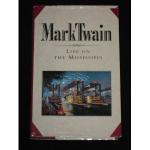However, New Orleans has begun—just this moment, as one may say. When completed, the new Cotton Exchange will be a stately and beautiful building; massive, substantial, full of architectural graces; no shams or false pretenses or uglinesses about it anywhere. To the city, it will be worth many times its cost, for it will breed its species. What has been lacking hitherto, was a model to build toward; something to educate eye and taste; a suggester, so to speak.
The city is well outfitted with progressive men—thinking, sagacious, long-headed men. The contrast between the spirit of the city and the city’s architecture is like the contrast between waking and sleep. Apparently there is a ‘boom’ in everything but that one dead feature. The water in the gutters used to be stagnant and slimy, and a potent disease-breeder; but the gutters are flushed now, two or three times a day, by powerful machinery; in many of the gutters the water never stands still, but has a steady current. Other sanitary improvements have been made; and with such effect that New Orleans claims to be (during the long intervals between the occasional yellow-fever assaults) one of the healthiest cities in the Union. There’s plenty of ice now for everybody, manufactured in the town. It is a driving place commercially, and has a great river, ocean, and railway business. At the date of our visit, it was the best lighted city in the Union, electrically speaking. The New Orleans electric lights were more numerous than those of New York, and very much better. One had this modified noonday not only in Canal and some neighboring chief streets, but all along a stretch of five miles of river frontage. There are good clubs in the city now—several of them but recently organized—and inviting modern-style pleasure resorts at West End and Spanish Fort. The telephone is everywhere. One of the most notable advances is in journalism. The newspapers, as I remember them, were not a striking feature. Now they are. Money is spent upon them with a free hand. They get the news, let it cost what it may. The editorial work is not hack-grinding, but literature. As an example of New Orleans journalistic achievement, it may be mentioned that the ‘Times-Democrat’ of August 26, 1882, contained a report of the year’s business of the towns of the Mississippi Valley, from New Orleans all the way to St. Paul—two thousand miles. That issue of the paper consisted of forty pages; seven columns to the page; two hundred and eighty columns in all; fifteen hundred words to the column; an aggregate of four hundred and twenty thousand words. That is to say, not much short of three times as many words as there are in this book. One may with sorrow contrast this with the architecture of New Orleans.




